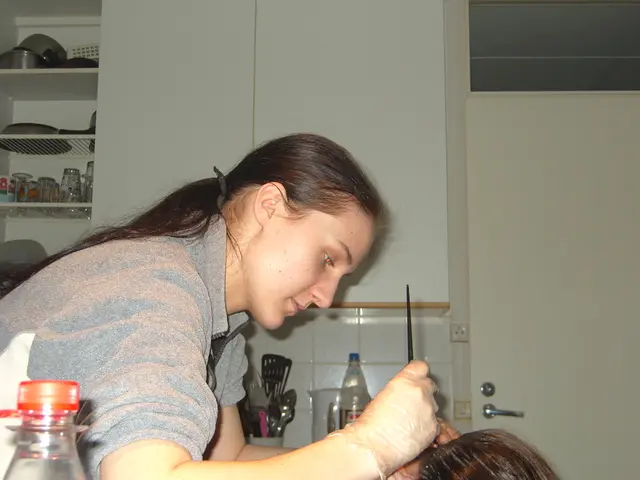Distinguishing between Age Spots and Skin Cancer: Recognizing the Variations
Freshening Up the Facts: Age Spots Vs. Skin Cancer
As our skin ages, we might encounter those unsightly discolorations known as age spots. These spots can resemble certain types of skin cancer, causing some worry. To help you tell the difference, we've put together a simple guide that covers the symptoms, diagnosis, and treatments involved with both conditions.
Age Spots vs. Skin Cancer: A Breakdown
Age Spots
Age spots, also known as solar lentigines or liver spots, are harmless dark spots that develop due to excess melanin production in response to UV radiation. They typically appear on areas of the skin frequently exposed to the sunlight.
Characteristics- Flat and smooth- Yellow, brown or gray- Borders are well-defined- Vary from a few millimeters to several centimeters in size- Usually pop up on sun-exposed areas like the face, hands, shoulders, etc.
DiagnosisA doctor or dermatologist will conduct a physical examination to determine whether the spot is an age spot or something else.
TreatmentWhile age spots are generally harmless, some people choose to get rid of them for aesthetic reasons. Treatments may include creams, laser treatments, cryosurgery, microdermabrasion, or chemical peeling.
Skin Cancer
Skin cancer is a type of cancer most commonly found on sun-exposed skin. Just like age spots, skin cancer prevalence increases with UV radiation exposure.
CharacteristicsSkin cancer symptoms may vary based on factors like the type of cancer and individual circumstances. However, signs of a skin growth being cancerous may include:- Asymmetry- Irregular, blurred, or ragged edges- Changing size, color, or shape- Multiple colors- Red patches- Pale or yellow patches resembling scars- Pain, itching, oozing, or bleeding- Crusty or scaly patches- Raised edges that lower in the middle
Skin cancer has three primary types:- Basal cell carcinoma- Squamous cell carcinoma- Melanoma
In some cases, a condition called actinic keratosis might be mistaken for age spots. Actinic keratosis is precancerous, meaning if left untreated, it could develop into squamous cell carcinoma.
DiagnosisDiagnosing skin cancer requires a physical examination and, in some cases, a skin biopsy to test for other conditions like skin cancer or actinic keratosis.
TreatmentThe treatments for skin cancer depend on the type and stage of the cancer, as well as the individual's circumstances. Common treatment options include surgical removal, chemotherapy, radiation therapy, or immunotherapy.
When to Consult a Doctor
Always consult a doctor if you notice any changes in your skin or if you find a mark that doesn't resemble other marks on your skin. Keep an eye out for:- marks that change in color, shape, size, or location- marks that look different from others on your skin- marks that itch, crust over, scab, or bleed and do not heal within four weeks
In the fight against skin cancer, early detection is key to improving treatment outcomes. While age spots are generally harmless, it's still essential to have any unusual skin changes checked by a doctor.
- Although age spots are harmless dark spots caused by excess melanin production, skin cancer, which is most commonly found on sun-exposed skin, shows symptoms such as asymmetry, irregular edges, changing size or color, multiple colors, pain, itching, oozing, or bleeding.
- Diagnosing skin cancer or actinic keratosis, which might be mistaken for age spots, requires a physical examination and, in some cases, a skin biopsy to test for other medical conditions.
- Besides treatments for age spots such as creams, laser treatments, cryosurgery, microdermabrasion, or chemical peeling, the treatments for skin cancer depend on the type and stage of the cancer, as well as the individual's circumstances, with options including surgical removal, chemotherapy, radiation therapy, or immunotherapy.
- In casual discussions around health and wellness, it's crucial to distinguish between age spots and skin cancer, as understanding the differences can help address skin care and medical-conditions concerns more effectively.
- To aid in the early detection of skin cancer and improve treatment outcomes, one should always consult a doctor if they notice any changes in their skin or if they find a mark that doesn't resemble other marks on their skin.








